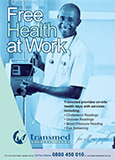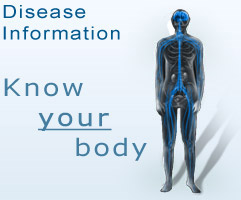Ankylosing Spondylitis
What is ankylosing spondylitis?
Ankylosing spondylitis is a type of chronic (long-term) arthritis that affects the bones, muscles and ligaments of the spine. It is five times more common in men than it is in women and usually occurs between the ages of 15 and 35.
How does ankylosing spondylitis occur?
In ankylosing spondylitis, the spinal joints and ligaments, as well as the joints between the sitting bone and the pelvis (sacroiliac joints) become inflamed. Inflammation in the spine can cause pain and stiffness in the neck and back. Sacroiliitis (inflammation of the sacroiliac joints) causes pain in the lower back and buttocks.
If not treated, over many years, the inflammation can cause the spine to become stiff. This is called ankylosis. In some people who have severe, long-term ankylosis, their rib cage (chest) can also become stiff and inflexible. Ankylosing spondylitis can also lead to arthritis developing in the large joints, such as the hips and knees.
Symptoms
The symptoms of ankylosing spondylitis vary greatly from person to person, usually taking a long time to develop. Symptoms may come and go, become better, or worsen over many years.
The main symptoms of ankylosing spondylitis are:
- back pain and stiffness
- buttock pain
- joint inflammation (arthritis)
- painful areas where tendons or ligaments attach to bone (enthesis)
- fatigue.
Back pain and stiffness
The back pain experienced tends to differ from other types of back ache. Patients with ankylosing spondylitis may find that:
- exercise, and not rest, relieves pain
- the back is particularly stiff in the morning, lasting for more than 30 minutes after you start to move around
- they wake up late in the night with pain and stiffness
- they have pain in their buttocks.
Ankylosing spondylitis can also cause arthritis in your hip, knee and other joints. It is unlikely that patients will develop symptoms in all of these areas. The main symptom is likely to be back pain.
Arthritis
The main symptoms associated with arthritis are:
- pain when moving the joint
- tenderness when the joint is examined
- swelling
- a feeling of warmth in the affected area.
Enthesitis
Enthesitis is painful inflammation where a tendon or ligament, joins a bone. Common sites for enthesitis are at the top of the shin bone, behind the heel, under the heel, and at the ends of the ribs.
Fatigue
Fatigue is a common symptom of untreated ankylosing spondylitis as the condition makes you feel tired and lacking in energy.
Causes
The cause of ankylosing spondylitis is not fully understood. However, certain factors have been identified which may increase your risk of developing the condition.
Genetic markers
Research has shown that most people who have ankylosing spondylitis carry a particular genetic marker, known as human leukocyte antigen B27 (HLA-B27). This means that people who have this antigen are more likely to develop ankylosing spondylitis than those who do not. However, most people with the marker do not develop ankylosing spondylitis.
Family history
Persons with a close relative, such as a parent or sibling, who has ankylosing spondylitis, are three times more likely to develop it compared with someone who does not have a relative with the condition. This likelihood remains small, as this is a fairly rare condition.
Diagnosis
Consult your doctor if you think that you may have ankylosing spondylitis. Your doctor will ask you about your symptoms and they may do some blood tests, including:
- full blood count to check for a reduced number of red blood cells (anaemia)
- erythrocyte sedimentation rate (ESR) to measure the rate at which red blood cells settle through a column of liquid
- C-reactive protein (CRP) to see if your blood contains a particular protein that is produced by your liver.
These blood tests can help to confirm whether or not there is inflammation in your spine and joints, which is one of the main symptoms of ankylosing spondylitis.
If your doctor thinks that you may have ankylosing spondylitis, he/she will refer you to a rheumatologist (a specialist in conditions affecting the muscles and joints) for further tests. Your rheumatologist may carry out further imaging tests in order to examine the appearance of your spine and pelvis. You may have x-rays, a magnetic resonance imaging (MRI) scan or an ultrasound scan.
The imaging procedures described above show the extent of any spinal inflammation and ankylosis (fusing of the spine) that you may have. However, as ankylosing spondylitis often takes a long time to develop, it is impossible to see damage to your spine that is yet to occur. For this reason, the condition is often difficult to diagnose, and in many cases, confirming a diagnosis is a long process.
Treatment
Ankylosing spondylitis is a chronic (long-term) condition, but most people who are affected by it are fully independent and lead relatively normal lives. There is no known cure for ankylosing spondylitis. Treatment aims to relieve the symptoms, prevent them from interfering with your daily life and to slow its progression.
- Suspected ankylosing spondylitis: If your doctor thinks that you may have ankylosing spondylitis, he/she will prescribe medication to control your symptoms, and you will be referred to a rheumatologist.
- Confirmed ankylosing spondylitis: If you are diagnosed with ankylosing spondylitis, your doctor will help you to find the most effective form of pain control, and will refer you to receive further treatment, such as physiotherapy.
There are various treatment options available for ankylosing spondylitis:
Physiotherapy
Physical activity and exercise are very important for effectively treating ankylosing spondylitis. Keeping active can improve posture and the range of spinal movement, and prevent the spine from becoming stiff and painful.
The doctor may refer you to a physiotherapist to advise you about the best ways to exercise and stretch and may draw up a suitable exercise plan.
Non-steroidal anti-inflammatory drugs (NSAIDs)
Non-steroidal anti-inflammatory drugs (NSAIDs) are a type of painkiller and works against inflammation. They are effective in treating ankylosing spondylitis because they help to relieve pain and inflammation in the joints. Examples of NSAIDs are ibuprofen, naproxen, and diclofenac.
NSAIDs may be unsuitable for you if you have asthma, high blood pressure (hypertension), kidney or heart conditions, or if you have ever suffered from stomach problems, such as a peptic ulcer. If this is the case, your doctor may prescribe an alternative painkiller, such as paracetamol with, or without, codeine.
Disease-modifying antirheumatic drugs (DMARDS)
These drugs modify disease and may be given as second-line treatment, if pain killers and NSAID drugs do not work.
Tumour necrosis factor (TNF) blockers
If symptoms of ankylosing spondylitis cannot be controlled with painkillers, exercise and stretching, a TNF blocker may be recommended. TNF is a chemical that is produced by the cells when tissue is inflamed.
These drugs are usually very expensive and you may have to negotiate with your medical scheme to determine how much of the total costs will be paid.
TNF blockers are given by injection and work by stopping the effects of TNF, helping to reduce the inflammation in your joints that is caused by ankylosing spondylitis. Examples of TNF blockers include etanercept, infliximab, and adalimumab.
If your rheumatologist recommends TNF-alpha blockers, your progress will be closely monitored as TNF blockers may interfere with the immune system.
Transcutaneous electrical nerve stimulation (TENS)
TENS is a type of therapy that works by numbing the nerve endings in your spinal cord which control pain. Small electrical pads (electrodes) are applied to the skin over your affected joints, which deliver small pulses of electricity from the TENS machine. Your physiotherapist can control the strength of the pulses and the length of your treatment.
Related conditions
Uveitis (inflammation of the eye), psoriasis (a skin condition) and irritable bowel syndrome (IBS) are sometimes associated with ankylosing spondylitis.
Follow up
Due to the symptoms of ankylosing spondylitis developing slowly, they tend to come and go. For this reason, patients will need to see their doctor or rheumatologist for regular check-ups.
Self-care advice and lifestyle changes
If you have been diagnosed with ankylosing spondylitis, the self-care advice outlined below may be useful:
- Take the medication that has been prescribed for you.
- Follow the exercise plan, stretches and exercises that your physiotherapist has recommended for you.
- Ensure that you have a good posture when sitting and sleeping.
- Do not smoke, as it has a negative impact on your overall health and is particularly risky for patients with ankylosing spondylitis.
- Placing hot or cold packs on the affected areas may help to relieve back or joint pain.
- If you are overweight, losing weight may be recommended.
Complications
Ankylosing spondylitis is a complex condition that can affect many different parts of your body. Some associated conditions include:
- uveitis
- osteoporosis (disuse of bones may lead to loss of bone strength)
- a slight raise in risk for cardiovascular disease
- a fixed, frequently bent posture, spinal fractures
- very rarely, severe compression of the lower nerves in the spinal cord (cauda equina syndrome).
References
http://www.uptodate.com/home/index.html
 TransmedBanner4.jpg)

